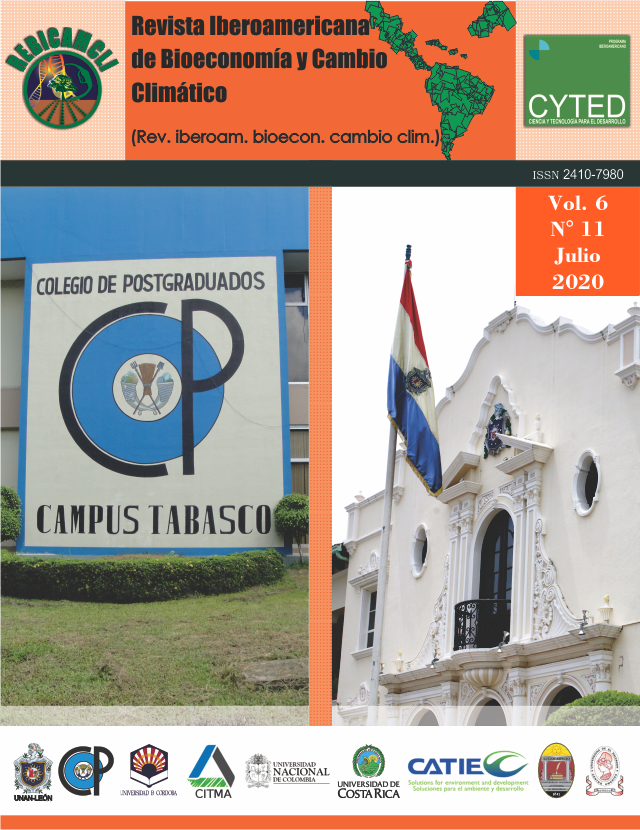Measuring the exposure of climate change in Mesoamerican cities
DOI:
https://doi.org/10.5377/ribcc.v6i11.9732Keywords:
Precipitation, Temperature, Urban areas, Mesoamerica, Extreme eventsAbstract
The present investigation analyzes the volatility of precipitation and temperature in Mesoamerican cities generated by climate change, using as a baseline the dynamics of the two observed climatic variables month by month; between 1971 to 1980 and 2001 to 2010, comparing them with future climate scenarios for the years 2061 to 2070. The Mesoamerican cities used in the analysis include the capital cities of the states of the Mexican southeast, Guatemala, El Salvador, Honduras, and Belize. Measuring climatic variables' volatility allows us to qualify if the distribution of rainfall and temperature is above or below the average ranges of the historical distribution of these variables. Understanding climate volatility provides a glimpse of a series of technical and political scenarios and generates concrete actions in the face of changes in long-term climate dynamics. Thus, it anticipates the effects of extreme climate events present in a region. The method empowers decision-making in public policy, particularly in urban areas where the tendency to dry and hot climates generate a series of consequences. Some consequences are i) the need to diversify drinking water sources and hydroelectric generation, ii) the effects of heat spells on the quality of life of the population, iii) the quality of sleep and productivity, and ultimately iv ) consumption of energy levels for air conditioning or refrigeration higher than current levels.
Downloads
Downloads
Published
How to Cite
Issue
Section
License
Copyright © 2022 Rev. iberoam. bioecon. climate change Graduate School and UNAN-León, School of Agricultural and Veterinary Sciences / Department of Agroecology / Center for Research in Bioeconomy and Climate Change (CIByCC).







